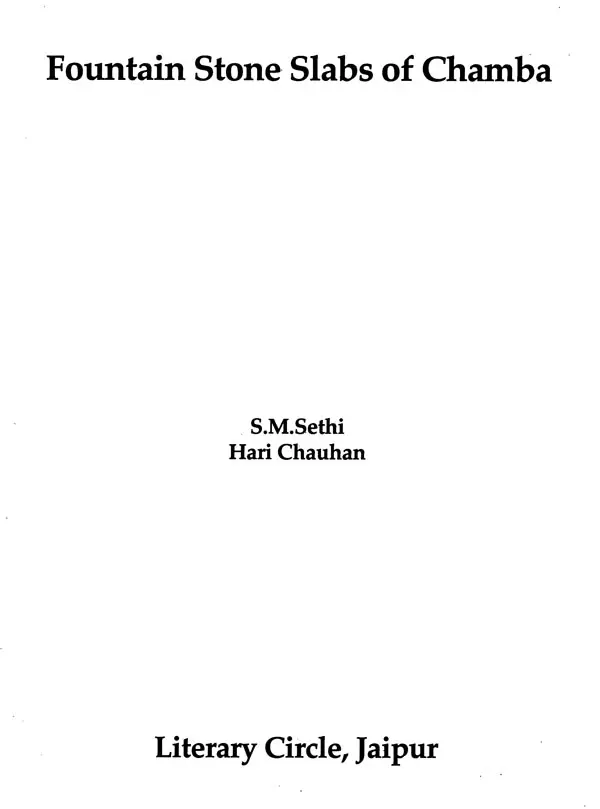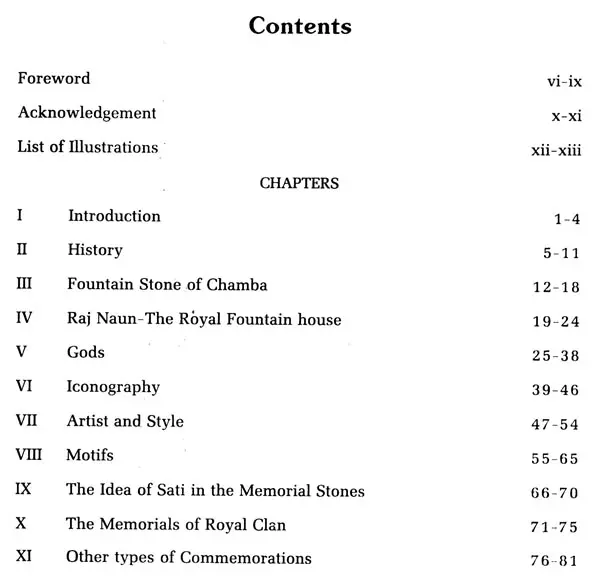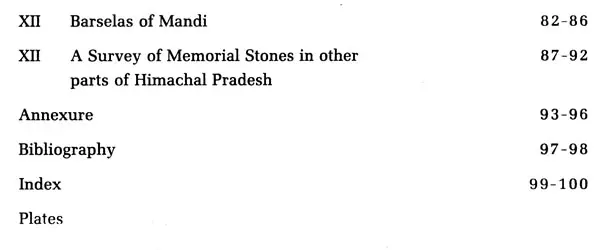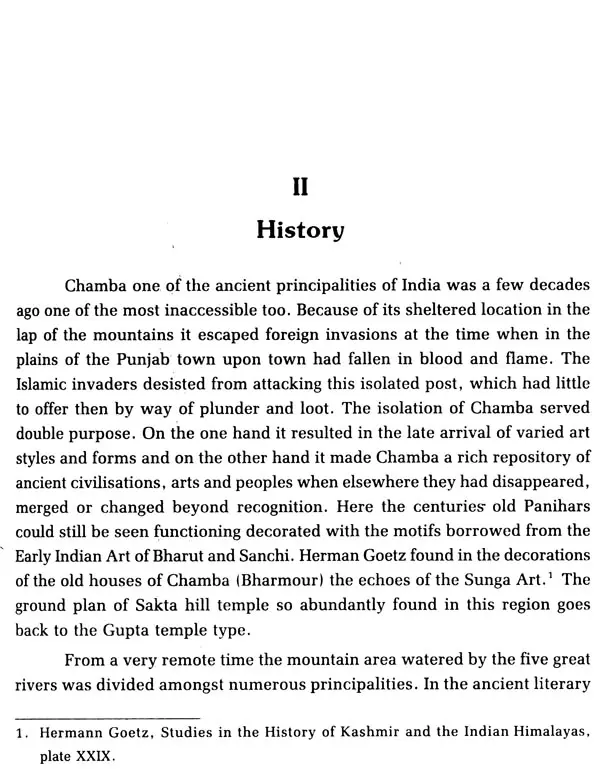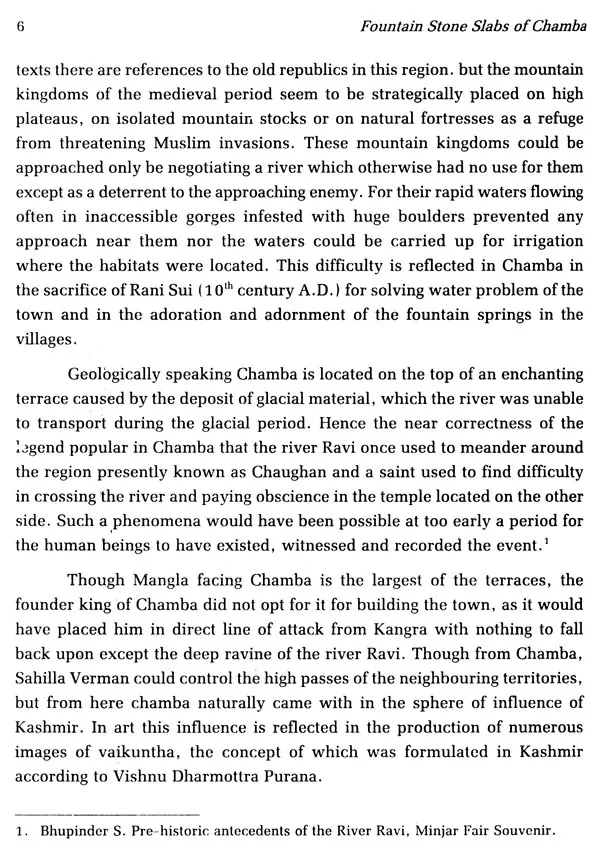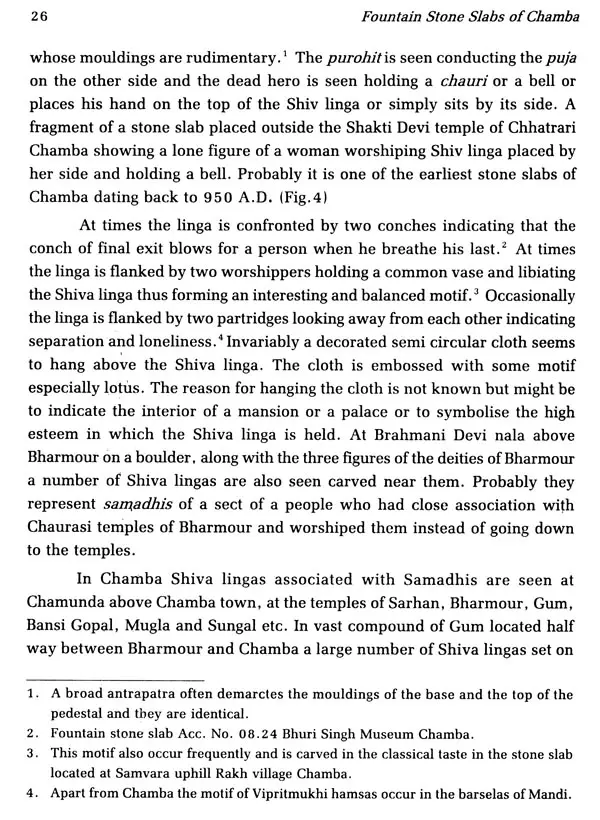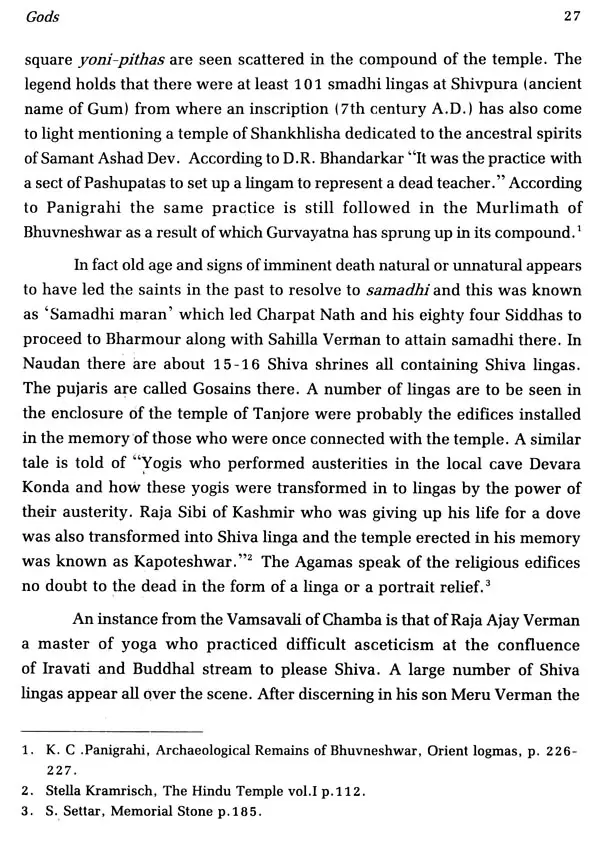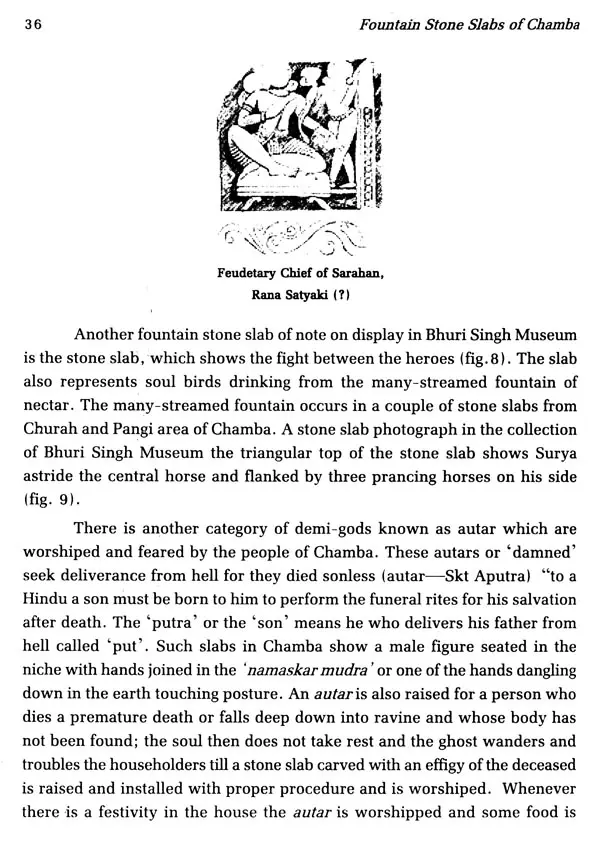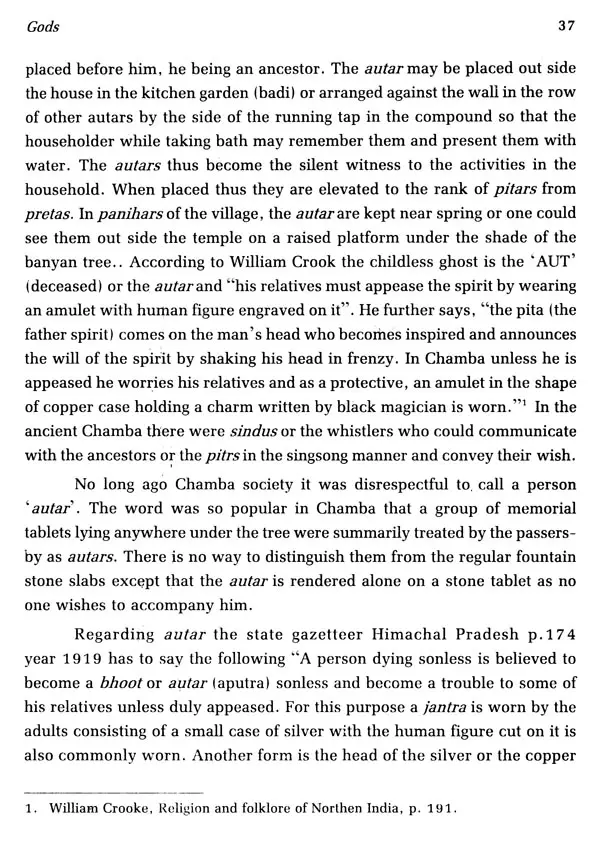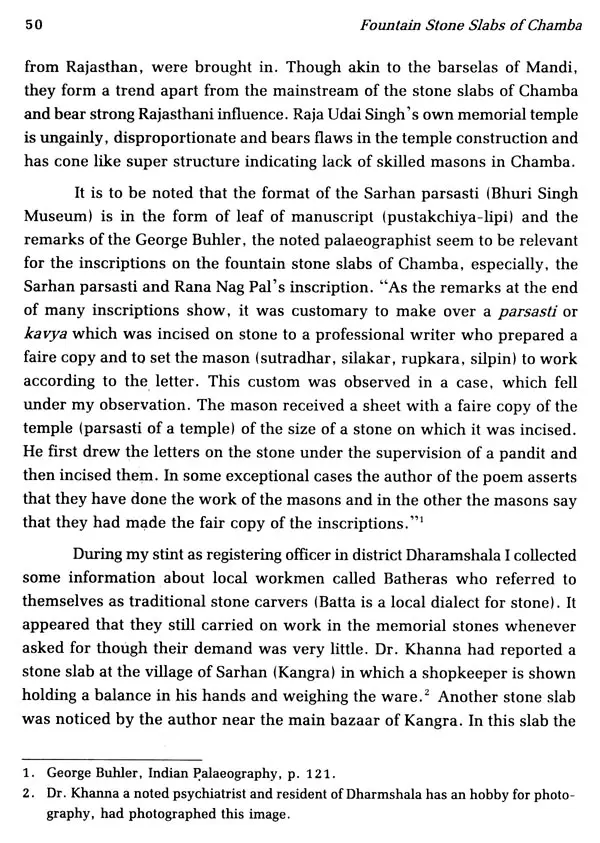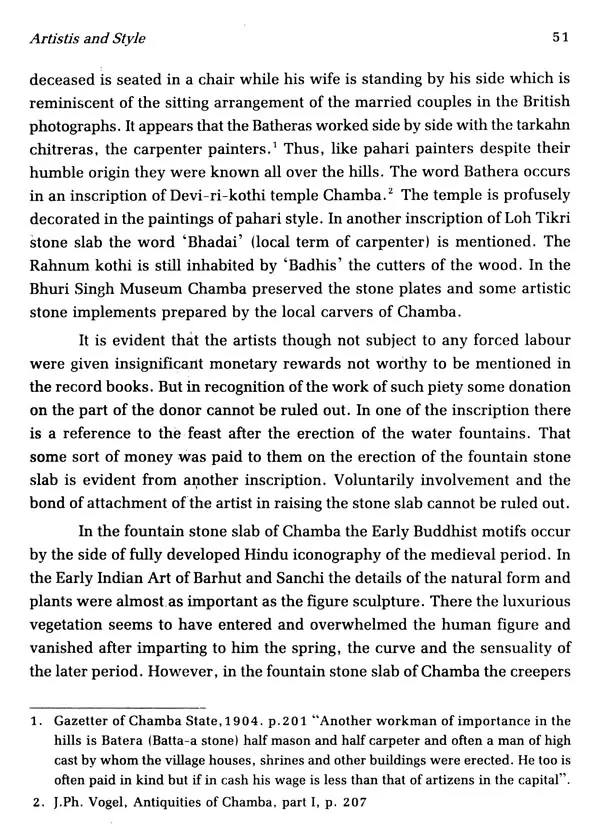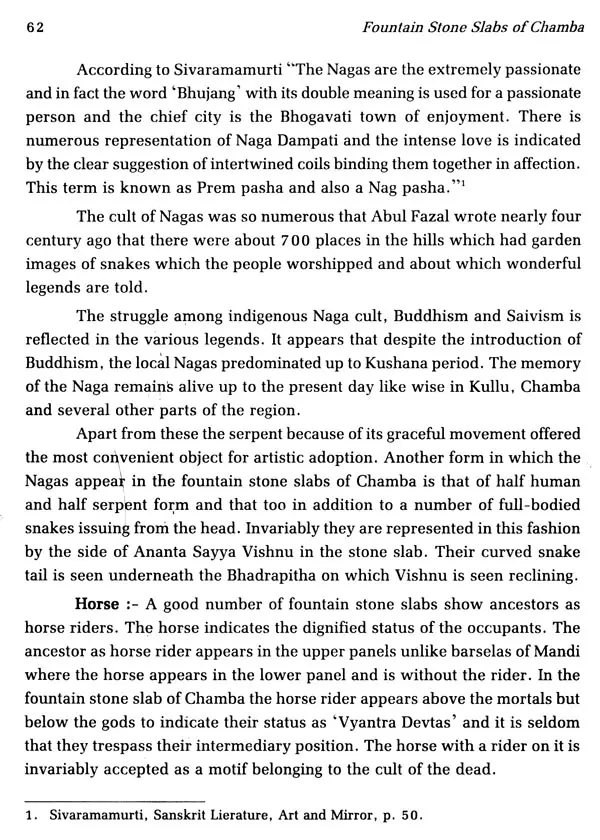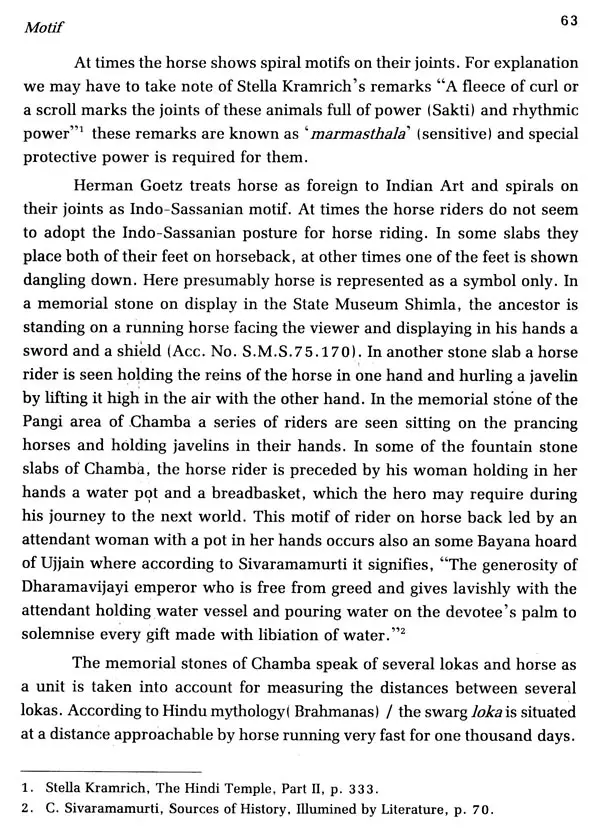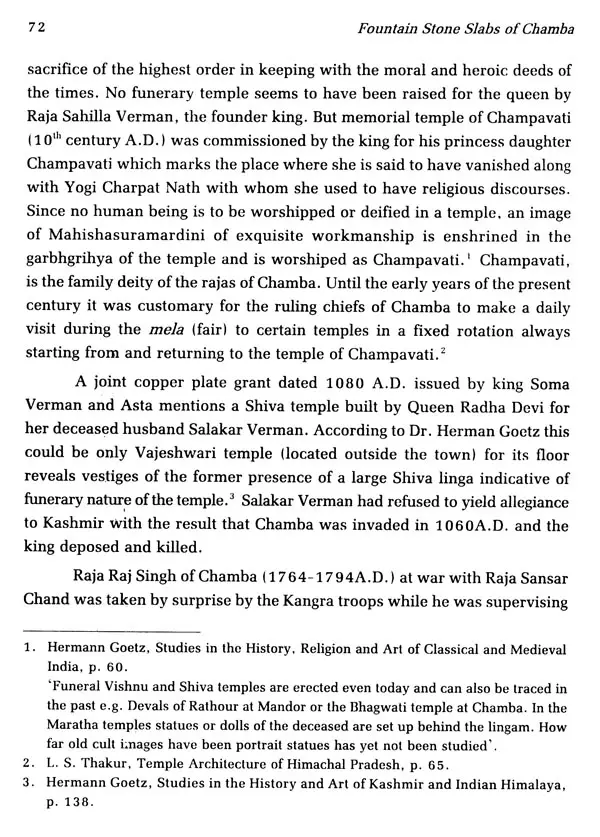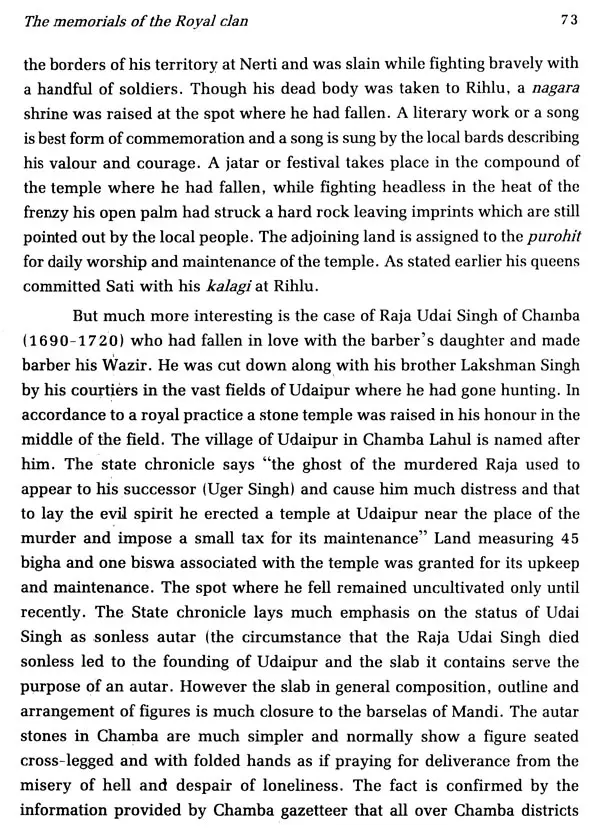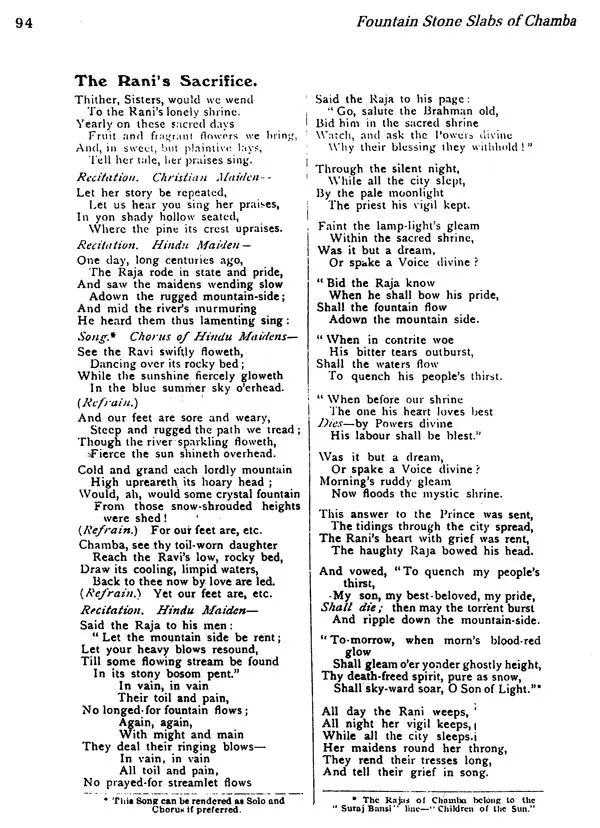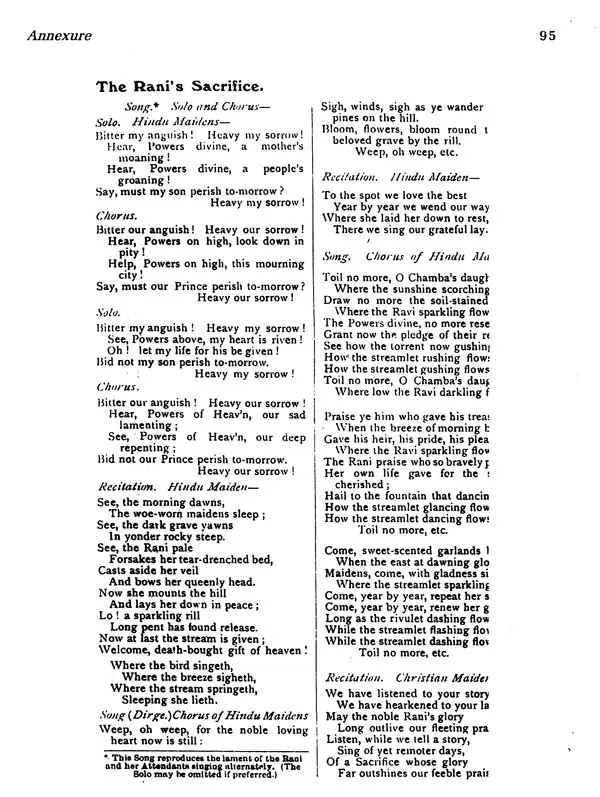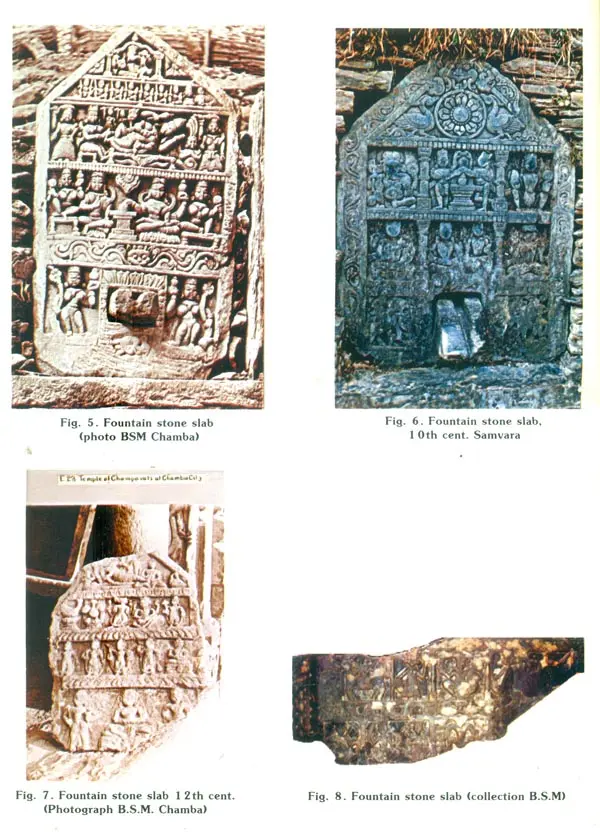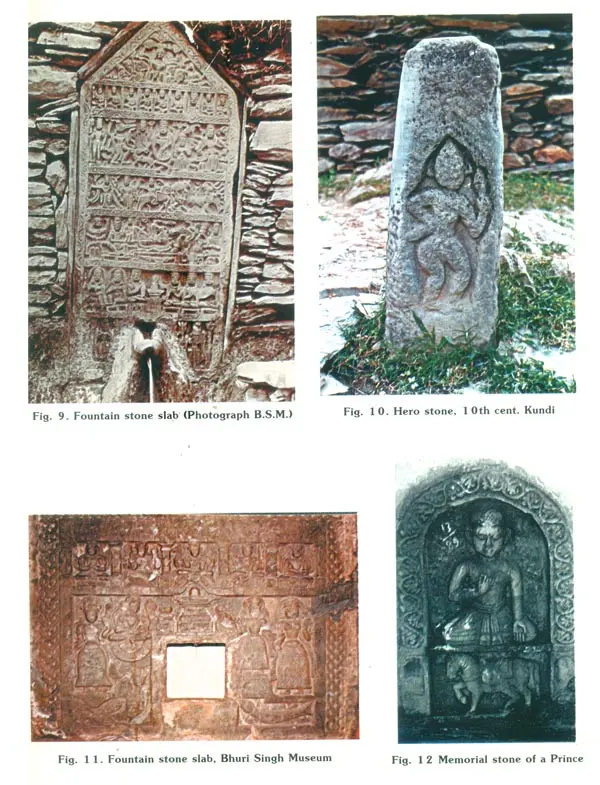
Fountain Stone Slabs of Chamba
Book Specification
| Item Code: | UAE844 |
| Author: | S.M. Sethi and Hari Chauhan |
| Publisher: | Literary Circle, Jaipur |
| Language: | English |
| Edition: | 2018 |
| ISBN: | 8181820304 |
| Pages: | 112 (Throughout Color Illustrations) |
| Cover: | HARDCOVER |
| Other Details | 10.00 X 7.50 inch |
| Weight | 500 gm |
Book Description
Thematically the fountain stone slabs of Chamba may commemorate the dead but geographically they mark the holly site of water. The marking of the site with the fountain stone slab indicate that it is dedicated to a higher presence. The worship of water places was prevalent since the Rig- Vedic time and water was considered a tangible manifestation of the cosmos. The scholars hitherto have referred, to the fountain stone slabs in passim only often dwelling on their inscriptional part either as a help to build up ;'chronology of. the Rajas of Chamba or to prove or disprove' a particular point in history or the subject of their study. This book attempts to take the less travelled path and endeavors to trace their origin, history, meaning and significance. It is hoped that the scholars and the students of the Indian Art will find this little book very stimulating and at the same time a welcome addition to the existing studies on the subject.
Published Books:
Catalogue of Manuscripts in the Bhuri singh Museum Chamba.
Catalogue of stone sculptures in the Museums of Himachal Pradesh.
Monuments of Himachal Pradesh (Contributing Author).
Costumes and Ornaments of Chamba, (Co-Author).
Musical Instruments of Chamba (Co-Author).
He has numerous articles and research paper on art, History and Culture , of Western Himalayan region to his credit.
During his services in the Museums and Archaeology he undertook several explorations to the far flung area of Himachal Pradesh.
Hari Chauhan
M.A. Ancient History, Culture & Archaeology. Fundamental courses in Indian Numismatics from IIRNS, Nasik. Presently working as Curator, Bhuri Singh Museum, Chamba. He has contributed several research papers in Art journals and Magazines of National and International fame. Awarded fellowship for his renowned contribution on the 'Traditional Jewellery of Pabbar Valley, Himachal Pradesh'.
The erstwhile Chamba kingdom included the area watered by Ravi and its tributaries and the river Chandrabhaga. Most of the inscribed fountain slabs are found in the Chandrabhaga valley, especially around Killar, the head quarter of the sub-division of Pangi. In Churah, the north-west part of Chamba, watered by Syuhal river and its tributaries, such memorials stone are exceedingly numerous there. In the Ravi valley, fountain stones are found at many places from Barbour down to Kheri where the river Ravi enters the Panjab territory but they are of much smaller size than those which are found in Churah and Pangi and then seldom bear a line of dedicatory inscription. Many of such fountain stone slabs are now in the collection of Bhuri Singh Museum Chamba, a store house of ancient cultural heritage.
The custom of raising memorials developed and became a fashion with the Chamba hill aristocracy, the Ranas and Thakurs and later it was regarded as a Royal privilege and became customary amongst the Royal linage. These fountain stone slabs in their basic concepts are essentially memorial in character raised in respect of the deceased in order to keep his or her memory alive. Nevertheless they are a great source for reconstructing the history of the region. The dedicatory inscription incised on these slabs also informs us both with the names of done, deceased and the ruling king during whose period it was erected.
The subject for engraving these dedicatory fountain slabs are drawn from the world of Hindus mythology amongst which Vishnu-Sheshasayi (Vishnu's sleep) Nav-grahas (nine planets), Dasavatars (Ten incarnations) of Vishnu are popular. The donor of the slab is showing worshiping lingasa symbol of fertility who presides over such monuments. The most prominent is the figure of Varuna, the god of water, in whose honor the fountain slab is dedicated.' Few lines of dedicatory 'praise' incised on a fountain slab are cited here.
"No higher god than Varuna, no higher gain of penitence, no higher shrine than Varuna is heard of in the Universe" (Vogel, Antiquities of Chamba . . State part lap. 202) Some inscription read on fountain stone slabs revealed that the slab raised itself was Varuna Dev (people of the village] [have] erected a fountain stone (Lit. god Varuna) for the sake of the next world". (Vogel, Antiquities of Chamba State part I, p. 205) It also reveals important evidence, that, these slabs are not only commemorative in nature but was also raised for obtaining the bliss from god Varuna for the welfare of the people. It also gives important information that the slab cited above is not erected in the memory of any deceased one but raised. in the name of lord Varuna, the god of water, for the prosperity of the people. The transliteration of an inscription cut on the above referred fountain stone slab is as under.
Book's Contents and Sample Pages
